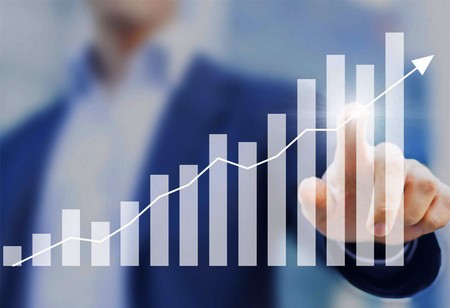
S&P Raises India's GDP Forecast to -7.7 Percent from -9 Percent


CEOInsights Team, 0
“Rising demand and falling infection rates have tempered our expectation of COVID-19 ‘s hit on the Indian economy. S&P Global Ratings has revised real GDP growth to negative 7.7 percent for the year ending March 2021, from negative 9 percent previously,” S&P said in a statement.
A faster recovery keeps more of the economy’s supply side intact and can set India up for more prolonged above-average growth during the recovery phase, it added. India’s gross domestic product (GDP) fell 7.5 percent in the July-September quarter, against a contraction of 23.9 percent in the April-June quarter. Earlier this month, Fitch Ratings also revised its growth forecast for India to (-) 9.4 percent, from (-) 10.5 percent, on signs of economic revival, while the Asian Development Bank said the economy is likely to contract 8 percent as against the earlier forecast of 9 percent contraction, on faster recovery. Last month, Moody’s upped India’s growth forecast to (-) 10.6 percent for the current financial year, from its earlier estimate of (-) 11.5 percent.
In the statement, S&P stated that India is learning to live with the virus, even though the coronavirus pandemic is far from defeated. However, the reported cases have fallen by more than half from peak levels, to about 40,000 per day. “It is no surprise that India is following the path of most economies across Asia-Pacific in
It is no surprise that India is following the path of most economies across Asia-Pacific in experiencing a faster-than-expected recovery in manufacturing production
experiencing a faster-than-expected recovery in manufacturing production,” said Shaun Roache, Chief Asia-Pacific Economist, S&P Global Ratings.
Manufacturing output was about 3.5 percent higher in October 2020 when compared to the year-ago period, while the output of consumer durables rose by almost 18 percent. S&P further said “This recovery underscores one of the more striking aspects of the COVID-19 shock - the resilience of manufacturing supply chains. Again, as with demand, some slowing of output momentum has emerged more recently”.
S&P said the vigour of this economic recovery is surprising, especially given the tepidity of policies underpinning it. “We have long pointed out that the fiscal impulse (the addition to domestic demand from higher spending and lower taxes) will be only about one percentage point of GDP this year. This contrasts with the robust fiscal responses of India’s emerging-market peers, which are four or five times larger,” S&P added.
The Reserve Bank of India has also been careful about cutting its policy rate, especially as higher inflation has pushed real rates to exceptionally low levels, it said. S&P added that it continues to see some upside risks to our forecasts, especially for the financial year 2021-22. “Rolling out vaccines to India’s huge population will be challenging. However, the aim to inoculate 300 million people by August 2021, combined with an existing high infection rate in some parts of the country, could result in a pronounced decline in reported cases later next year. “This would speed up the transition to a new normal,” it said.
“The new forecasts suggest more small businesses can survive and more workers can hold onto their jobs or find new ones. The less intense and the more transient the effect of the pandemic on economic activity, the lower the permanent damage,” said Shaun Roache.